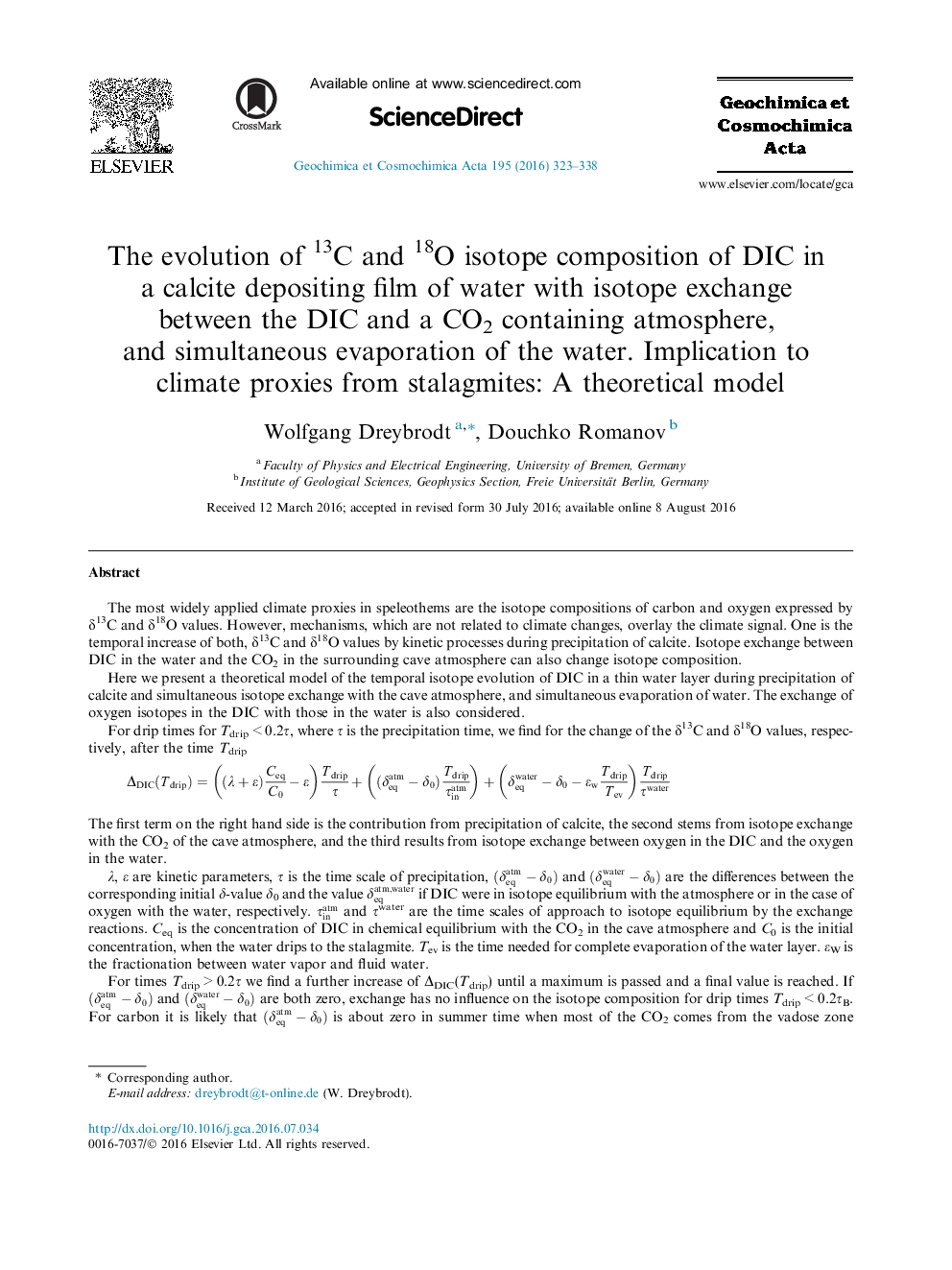| Article ID | Journal | Published Year | Pages | File Type |
|---|---|---|---|---|
| 6437085 | Geochimica et Cosmochimica Acta | 2016 | 16 Pages |
The most widely applied climate proxies in speleothems are the isotope compositions of carbon and oxygen expressed by δ13C and δ18O values. However, mechanisms, which are not related to climate changes, overlay the climate signal. One is the temporal increase of both, δ13C and δ18O values by kinetic processes during precipitation of calcite. Isotope exchange between DIC in the water and the CO2 in the surrounding cave atmosphere can also change isotope composition.Here we present a theoretical model of the temporal isotope evolution of DIC in a thin water layer during precipitation of calcite and simultaneous isotope exchange with the cave atmosphere, and simultaneous evaporation of water. The exchange of oxygen isotopes in the DIC with those in the water is also considered.For drip times for Tdrip < 0.2Ï, where Ï is the precipitation time, we find for the change of the δ13C and δ18O values, respectively, after the time TdripÎDIC(Tdrip)=(λ+ε)CeqC0-εTdripÏ+(δeqatm-δ0)TdripÏinatm+δeqwater-δ0-εwTdripTevTdripÏwaterThe first term on the right hand side is the contribution from precipitation of calcite, the second stems from isotope exchange with the CO2 of the cave atmosphere, and the third results from isotope exchange between oxygen in the DIC and the oxygen in the water.λ, ε are kinetic parameters, Ï is the time scale of precipitation, (δeqatm-δ0) and (δeqwater-δ0) are the differences between the corresponding initial δ-value δ0 and the value δeqatm,water if DIC were in isotope equilibrium with the atmosphere or in the case of oxygen with the water, respectively. Ïinatm and Ïwater are the time scales of approach to isotope equilibrium by the exchange reactions. Ceq is the concentration of DIC in chemical equilibrium with the CO2 in the cave atmosphere and C0 is the initial concentration, when the water drips to the stalagmite. Tev is the time needed for complete evaporation of the water layer. εW is the fractionation between water vapor and fluid water.For times Tdrip > 0.2Ï we find a further increase of ÎDIC(Tdrip) until a maximum is passed and a final value is reached. If (δeqatm-δ0) and (δeqwater-δ0) are both zero, exchange has no influence on the isotope composition for drip times Tdrip < 0.2ÏB. For carbon it is likely that (δeqatm-δ0) is about zero in summer time when most of the CO2 comes from the vadose zone (ground air), and about 12â° in winter time in well ventilated caves, when most of the CO2 stems from Earth's atmosphere outside the cave.Therefore δ13C may be affected by isotope exchange. For the 18O equilibrium between the DIC and the oxygen in the water as well as the oxygen in the CO2 of the atmosphere is likely in summer time. In winter time CO2 from the atmosphere outside the cave with δ of about 6â° VPDB may imprint small signals.
